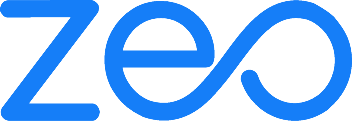The continuous growth of eCommerce has significantly increased the pressure on last-mile delivery. To stay competitive, businesses today need to process and ship orders quickly and efficiently.
Distribution centers play a crucial role in last-mile delivery. It enables businesses to consolidate products from various suppliers and process them in a specific location. Thereby reducing shipping time and improving order fulfillment.
In this blog, we will learn about distribution centers, their significance, and how organizing one can benefit delivery businesses.
What is a Distribution Center?
A distribution center is a significant component of supply chain management. Such a facility receives, stores, and distributes goods and products to other distribution centers, retailers, and customers.
Distribution centers act as a centralized location where products are collected, sorted, and processed for delivery. It helps businesses optimize transportation costs and save time on delivery.
Companies can also use such facilities for carrying out value-added services like product assembly, packaging, or customizations—helping them add more value to their services by meeting the specific needs of their customers.
How Does it Differ from a Warehouse?
Both distribution centers and warehouses stores products and goods. However, there are some fundamental differences between the two:
- Purpose: A warehouse is an ideal choice for the long-term storage of materials and products. A distribution center enables easy movement of products in and out of the facility, with efficient order processing and distribution as the primary goal.
- Operations: A warehouse requires fewer employees than a distribution center; they mainly focus on storing and shipping goods, whereas the latter requires more people to focus on picking, storing, packing, and shipping products.
- Inventory: A warehouse typically has a high volume of a few products, whereas a distribution handles a wider range of products in lower volumes. As a result, distribution centers require capable inventory management systems to track and manage goods.
- Location: Warehouses are usually located adjacent to manufacturing facilities, whereas distribution centers are close to populated areas with easy access to transportation and customers.
Both warehouses and distribution centers are used for storage, while the latter focuses more on the quick and accurate movement of products.
What are the Benefits of a Distribution Center?
Let us now explore the primary benefits of running a distribution center:
- Efficient Inventory Management: The centralized location of a distribution center helps companies optimize their inventory, minimize the risk of stockouts, and reduce the costs associated with excess stock.
- Improved Order Fulfilment: Companies can use distribution centers to efficiently consolidate products from several suppliers and process them in a specified location. Doing so helps accelerate order processing and improves customer satisfaction.
- Reduced Transportation Costs: Consolidating products in a distribution center helps businesses optimize transportation costs using cost-effective shipping methods. Thus, reducing transportation costs and improving the supply chain efficiency.
- Value-Added Services: Distribution centers can be used to offer value-added services like product assembly, customization, or packaging, allowing businesses to meet the specific needs of the customers.
- Scalability: A distribution center is flexible. Businesses can scale it down or up depending on the company’s requirements. This flexibility allows businesses to quickly respond to the market conditions.
How Should You Organize a Distribution Center?
Organizing and managing a distribution center can be complex, but it is crucial for smooth operations and efficient order processing. Following are some tips on how to organize a distribution center effectively:

increase fuel savings
Hassle Free Deliveries & Pickups!
Optimize routes with our algorithm, reducing travel time and costs efficiently.
Get Started for Free
- Efficiently Use Space: Use vertical space in distribution centers by installing high-density storage systems like pallet racking, shelves, and mezzanines. Doing so helps in fully utilizing and optimizing the available space.
- Invest in Technology: Harness the power of technology to improve inventory accuracy, productivity and reduce errors. You can use automated systems and technology like an inventory management system, barcode scanners, conveyor, and a delivery management system.
Read more: Latest Delivery Tech Stack for 2023. - Standardize Processes: Implementing a standardized process for receiving, storing, and shipping products ensures that the tasks are performed efficiently with minimal errors.
- Maintain Cleanliness: A regular cleaning and organizing of the distribution center is essential to maintain a safe and hygienic working environment. It also helps preserve the packing of the products and prevents damage to the equipment.
- Train Staff: Provide comprehensive training on handling products, operating equipment, and following safety products. Doing so ensures that they are knowledgeable and component in their roles—thus leading to a more efficient and effective distribution center.
Proper distribution center organization will eventually improve the flow of products through the facility and help improve productivity and minimize errors.
How are Distribution Centers Evolving in the Future?
The evolution of distribution centers is being accelerated through continuous technological development, increased automation, and a greater focus on environmental responsibility and sustainability. The rise of eCommerce has inflated the demand for faster and more flexible delivery options. Thus, distribution centers today need to invest in technology that can help effectively manage their fleet of delivery vehicles and drivers.
Seamlessly Manage Your Drivers and Deliveries with ZeoAuto
Distribution centers play a significant role in modern logistics and supply chain management. They are crucial for efficiently storing, processing, and distributing products to customers and retailers. With the appropriate approach, companies can leverage the power of distribution centers to reduce costs, improve efficiency, and deliver outstanding customer service.
However, the increasing load on last-mile delivery requires companies to rely on delivery management software to maintain high levels of customer satisfaction.
If you are looking for such software, you can check out ZeoAuto. Our product is designed to serve both drivers(Mobile Route Planner) and fleet managers(Route Planner for Fleets). You can simply add your vehicle configuration, pick-up, and delivery points, and the app will optimize the best available routes in no time.
Enhance last-mile delivery and satisfy your customers. Book a demo today!
Read more: The Role of Route Optimization in E-Commerce Delivery.

Are you a fleet owner?
Want to manage your drivers and deliveries easily?
Grow your business effortlessly with Zeo Routes Planner – optimize routes and manage multiple drivers with ease.

increase fuel savings
Save $200 on fuel, Monthly!
Optimize routes with our algorithm, reducing travel time and costs efficiently.
Get Started for Free




















